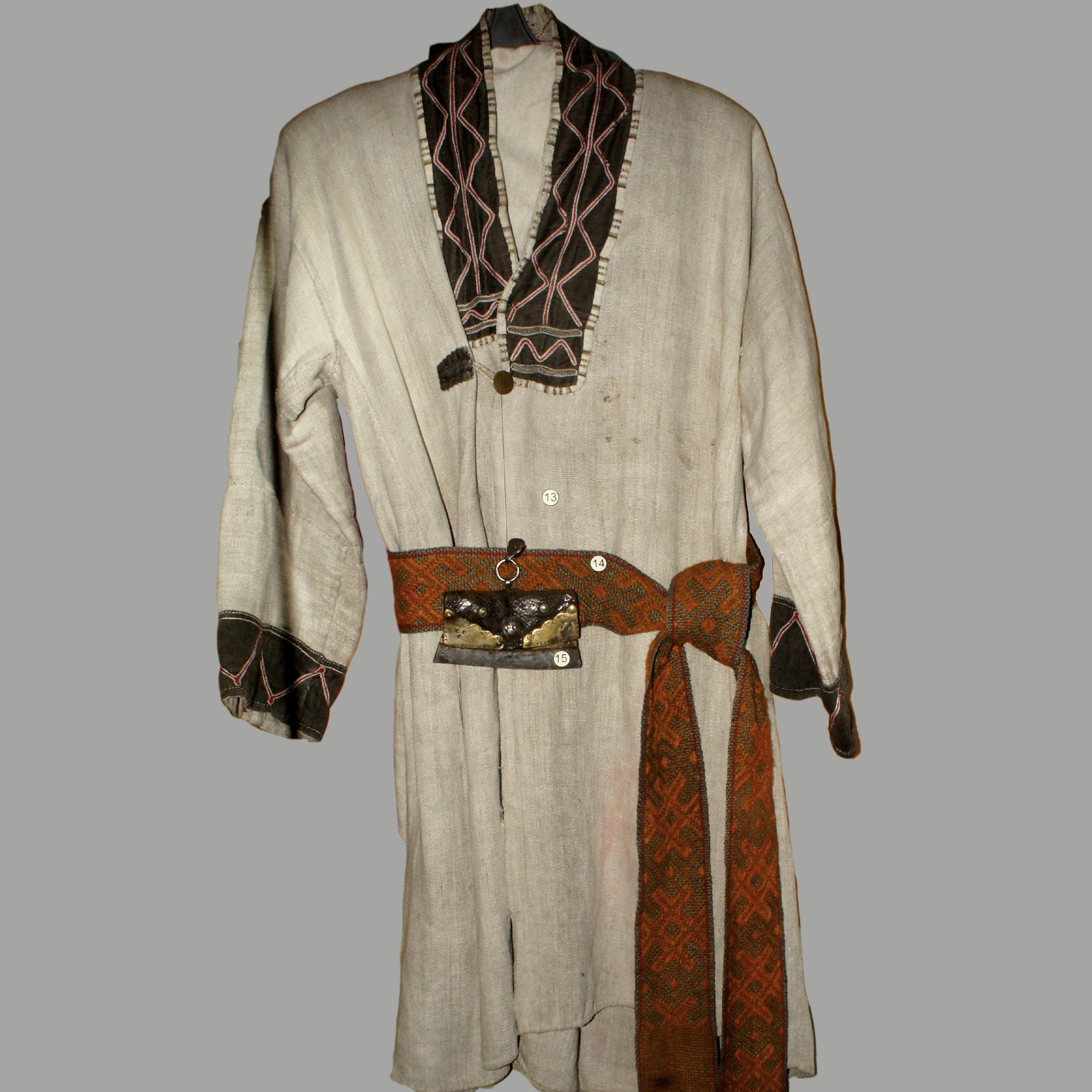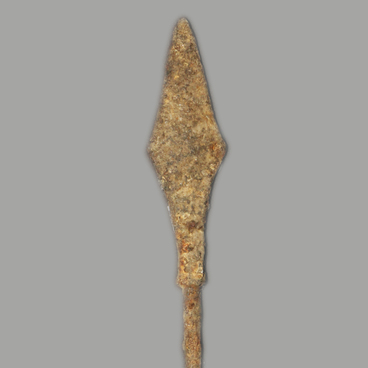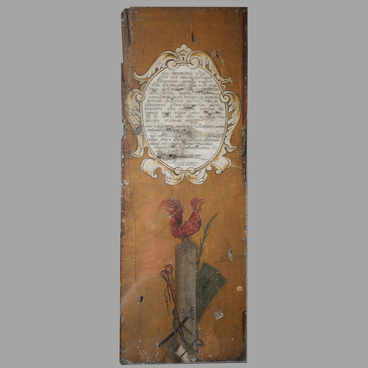Robe (Shor — shabyr) was made in the territory of Mountain Shoria in the Shors' residential areas. It is a Shor men’s casual and festive outer clothing. Sewed by hand of homespun kendir cloth (hemp-based cloth). Tunic-shaped cut, body made of two sheets folded along the shoulders sewn along the middle line of the back. Between the fronts and back, from the arm-hole to the bottom, there are two gores sewn on each side. Left-handed wrap. Sleeves are wide, narrowing to the cuffs
Robe
Creation period
The 1st half of the 20th century
Dimensions
94x47 cm
Technique
Cutting, sewing
Collection
Exhibition
4
Open in app#1
Unknown Author
Robe
#2
#7
The collar banded at the back passes into a shawl neckline in front, sewn to the edges of the fronts. The collar and sleeve cuffs are bounded with black satin, and there is a straight line embroidered on it with white woolen thread, framed on both sides by a zigzag red ribbon.
#5
Of particular interest is the ornamentation on the robe. As noted by researchers (T.I.Kimeyeva, 2000), the manufacture of ornamented objects, perhaps, refers to those times when ornaments in the life of the Shors had not yet lost its guarding and protecting function. It was preserved in recess and remote places of the taiga, where the way of life, customs and rites of hunters changed very slowly over the centuries. The dominant motives are those of the Sayano-Altaic type - triangles, crossed triangles, converging zigzags, chevrons, rhombuses, oblique grid, rectangles with small rectangles inscribed in them. Some of the elements included in this type of patterns were found on bone objects of the paleometallic epoch in the south of Siberia.
#6
Shors are a Turkic-speaking people the number of which nowadays amounts to about 14,000. There are two ethnographic groups of Shors: southern, living in the mountains and taiga, and northern, living in the plain.
This special ethnos is a result of the merger of the local Ket-speaking and foreign Turkic-speaking tribes. Historians believe that the formation of the Shor people began in the XVII century, when the Kuznetsky uyezd emerged. At the same time, when the Russians began to actively develop the upper reaches of the Tom River, the first mentions of the Shors or, as they are also called, “Kuznetskie Tatars”, appeared.
Up until the beginning of the 20th century, the Shor people lived according to their traditional way of life with some of the remains of the clan community preserved. Polygonal log houses with conical roofs, half-dugout houses, summer huts, and Russian huts in northern groups also served as dwellings for Shors of that time. Production was mainly of household level, and trades - pottery, weaving, leather and woodworking - was mainly plied by women. One of the most important trades of the Shors was blacksmithing, as well as metal mining and processing.
By the beginning of the XX century, traditional Shor clothes were sewn only in the remote South Shorian uluses.
This special ethnos is a result of the merger of the local Ket-speaking and foreign Turkic-speaking tribes. Historians believe that the formation of the Shor people began in the XVII century, when the Kuznetsky uyezd emerged. At the same time, when the Russians began to actively develop the upper reaches of the Tom River, the first mentions of the Shors or, as they are also called, “Kuznetskie Tatars”, appeared.
Up until the beginning of the 20th century, the Shor people lived according to their traditional way of life with some of the remains of the clan community preserved. Polygonal log houses with conical roofs, half-dugout houses, summer huts, and Russian huts in northern groups also served as dwellings for Shors of that time. Production was mainly of household level, and trades - pottery, weaving, leather and woodworking - was mainly plied by women. One of the most important trades of the Shors was blacksmithing, as well as metal mining and processing.
However, when the territory of their residence became part of the Russian Empire that trade fell into disrepair.
By the beginning of the XX century, traditional Shor clothes were sewn only in the remote South Shorian uluses.
#8
Novokuznetsk Ethnography Museum
read morehide
00:00
00:00
1x
Robe
Creation period
The 1st half of the 20th century
Dimensions
94x47 cm
Technique
Cutting, sewing
Collection
Exhibition
4
Open in app
Share


